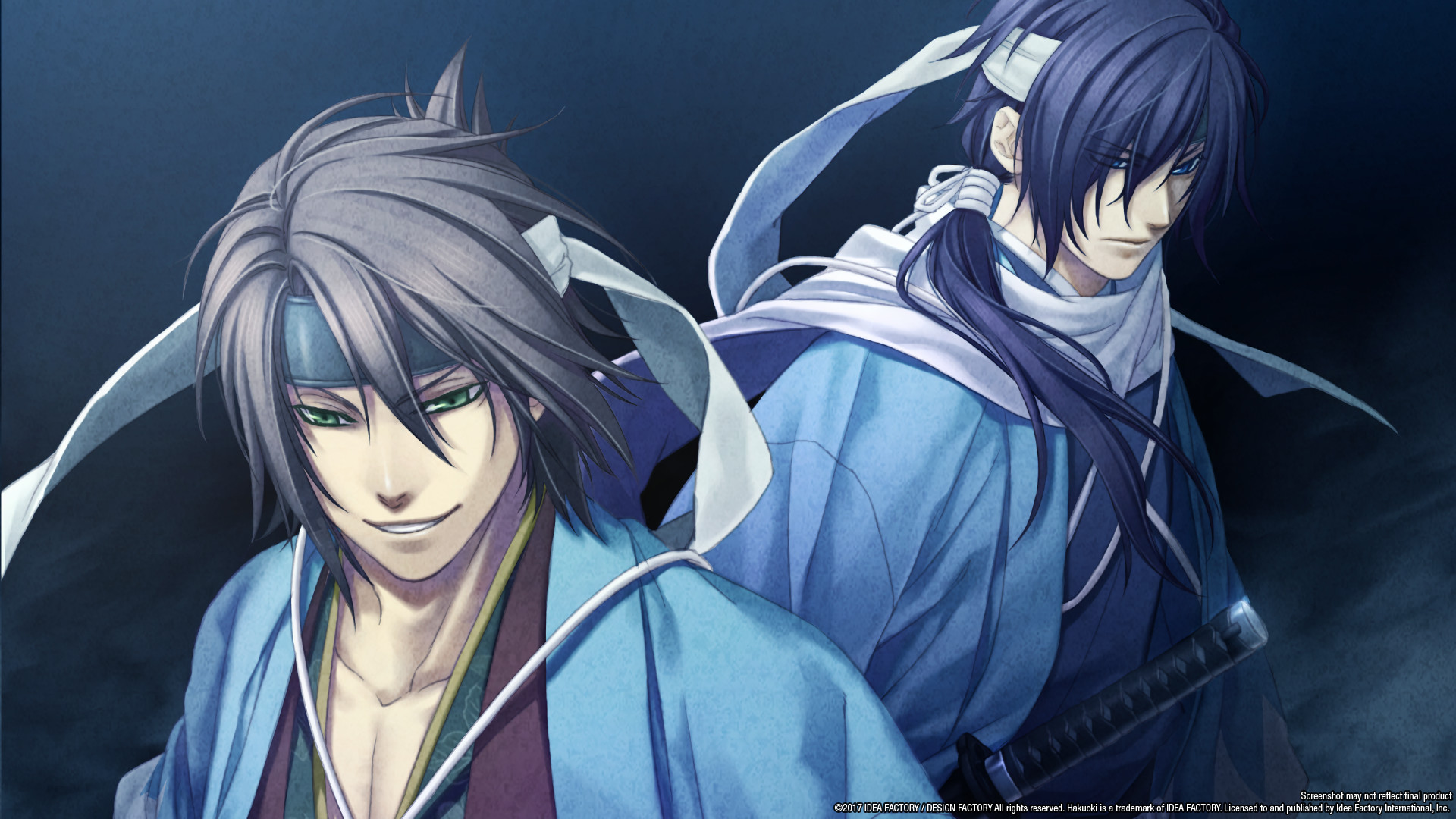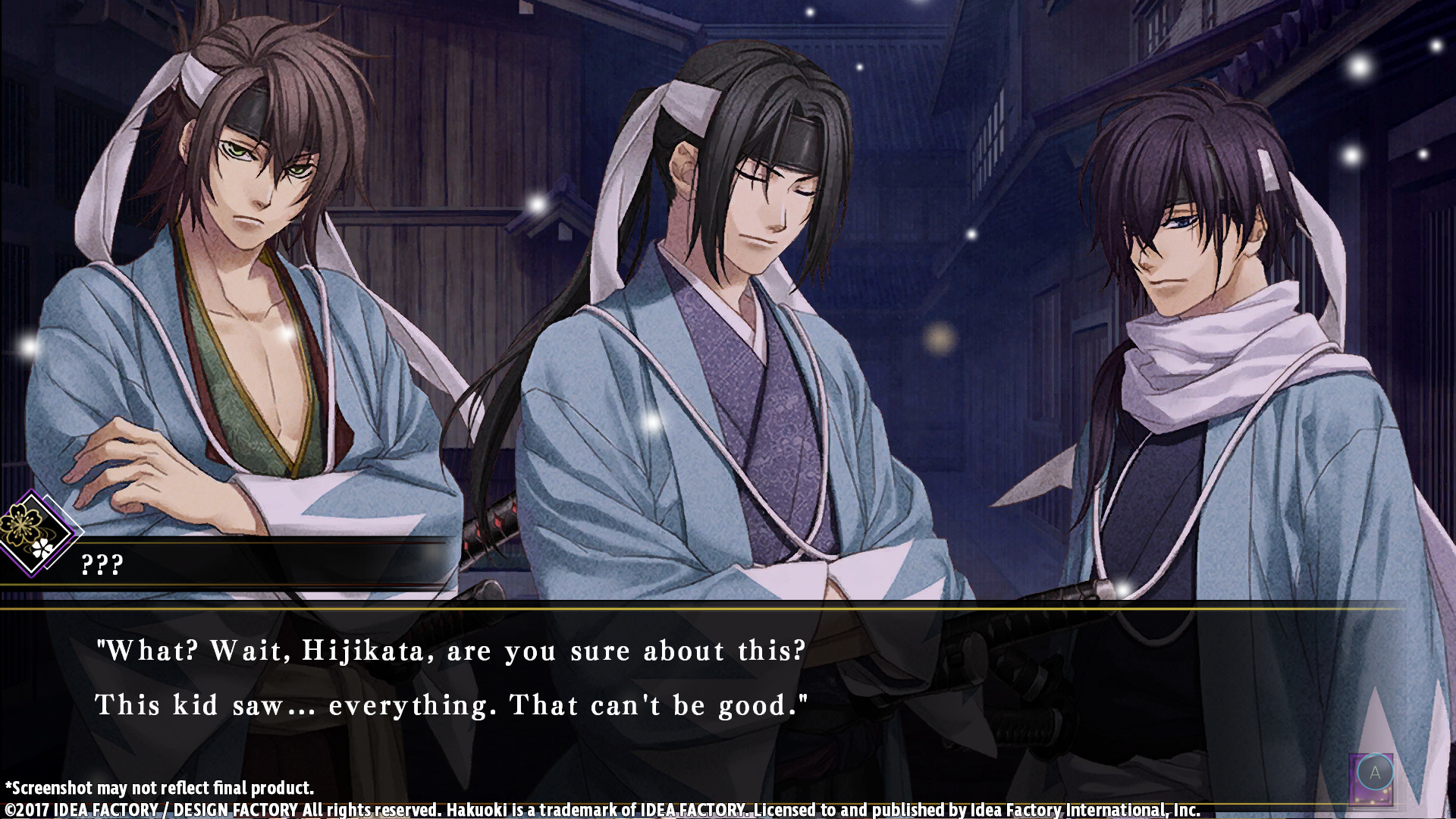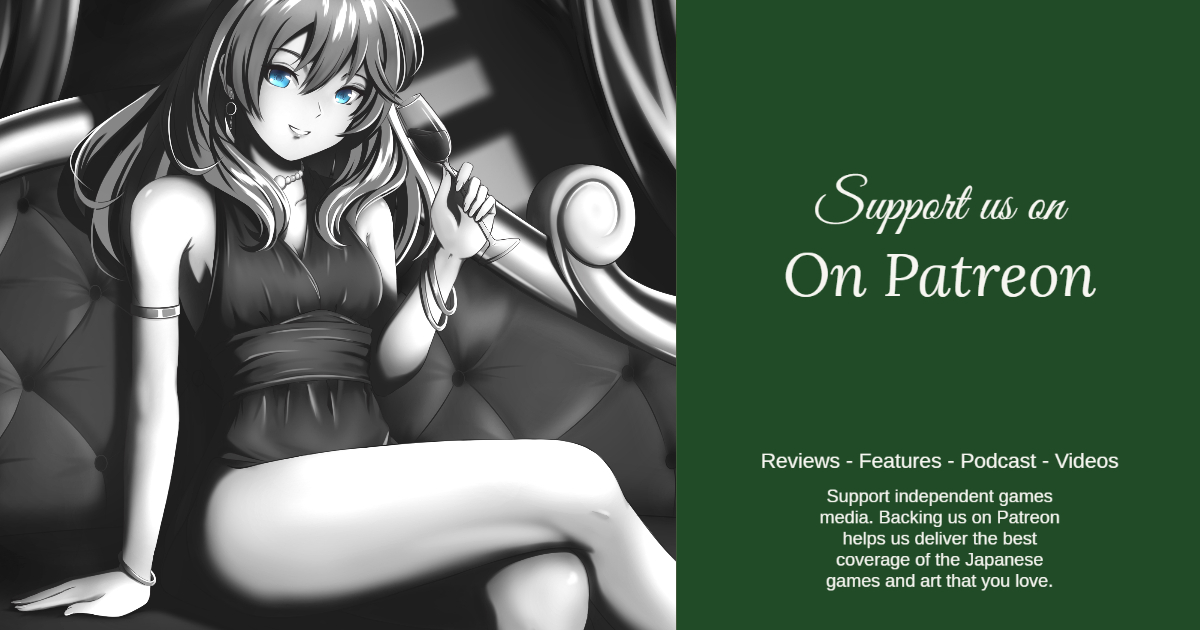Hakuoki was my first otome game, right back when it was released on the PlayStation 3. Actually, I think it might have been my very first visual novel. It seems hard to imagine now, but a decade ago, digital distribution wasn’t in the same place, and visual novels being released to consoles, where physical editions were required, were mandatory. Now we get a new VN on something or other almost every week. Back then it was a novelty. And now thanks to Eastasiasoft we can play the pioneering game on the Nintendo Switch.
Related reading: Our review of the game’s release on the PlayStation 3.
This is a very good thing because one of the finest qualities of Hakuoki is its incredible art, and I have an OLED Switch. The gorgeous use of colour and contrast that makes just about every scene in the game like looking at a painting in a gallery really sings on this screen, and for that reason alone this is the definitive version of a game that has been released on many platforms already.
You’re also getting two games in one package with the Switch release, as the story of Hakuoki was originally split into two distinct releases, a little like how Lord of the Rings is generally bought in three volumes. But you do need to play them both through for the full story, so bundling them together is the only approach that makes sense.
But what is Hakuoki, if you’re one of the few visual novel and otome fans that somehow hasn’t played this before? Essentially, it’s historical fiction, with some fantastic elements thrown in. The story follows the Shinsengumi – a kind of military police that fought for the government during the latter period of the Tokugawa shogunate and was a major participant in the Boshin civil war that resulted in the end of the military government. They had something of a fearsome reputation, and in Hakuoki, you follow the story of a young woman who gets caught up in their clandestine operations and outright conflict.
And there are vampire-like feral samurai. That bit’s not historical, but certainly adds to the drama in the game, setting the threat they pose right next to fairly authentic retellings of the actual battles that the Shinsengumi participated in.
At first, it seems like it should be a strange mix. The game really does work hard to create a sense of historical authenticity before suddenly bringing up the vampire things again, but thanks to some excellent writing the story is cohesive. And the writing really is great. Every character has a distinct, clear, and well-structured personality, and the development of the relationships between the characters, including the eventual romance, comes through naturally.
Not that romance is a major part of much of the game. One of the reasons that Hakuoki is an excellent introduction for the otome genre is because it’s largely historical drama with big action scenes. There are plenty of boys for the protagonist to fall for based on the decision you make across a smattering of options that pop up through the game, but she isn’t entirely defined by this, and has a significant role to play in the drama beyond being the love interest. In comparison to some other otome VNs, this protagonist is more of a self-insert. To an extent, this is disappointing, given that other otome games have been released since with incredible, memorable protagonists, but it’s important to remember that this is one of the older examples of its genre now.
I don’t have much else to say about Hakuoki on the Switch that I didn’t say in my review of the game all the way back on the PlayStation 3. It was wonderful then, it remains wonderful now, and thanks to the quality of the OLED screen the all-important art feels like it’s getting better with age. Hakuoki is like a fine wine and will forever remain worthwhile, no matter how many times it gets bundled up for a re-release.













